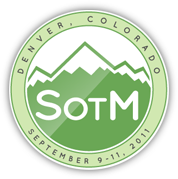Tutorial: PyWPS
yWPS is a Python implementation of OGC's WPS 1.0.0 protocol on the server side. PyWPS development started in 2006 and was first presented in FOSS4G 2006 at Lausanne. Originally it was written with direct support for GRASS GIS modules, however it is not limited to GRASS only, any sort of GIS functionality written in Python will be served as a WPS. PyWPS distribution does not include any processes by default. The user has to program his or her custom ones and add them to PyWPS instance. The tutorial will start by focusing on installation and configuration of PyWPS on the server, how to construct custom WPS processes with help of GRASS GIS, GDAL/OGR, R and Shapely, to deploy custom process into a PyWPS instance. First part will conclude with examples covering basic logging while the process is running and debugging of non working processes. Second part, will be web oriented presenting PyWPS's Java Script based WPS client (using OpenLayers web mapping library), that is able to parse Capabilities and ProcessDescription documents from WPS server, generating an HTML form for input data. After submitting the form with all inputs set, Execute operation on given data is then requested and the final response will be displayed on the map. To conclude the tutorial, special features of PyWPS will be demonstrated, like running PyWPS in Java environment, using Jython as Python interpreter and Apache Tomcat as server. PyWPS together with UMN MapServer - how to make data outputs from PyWPS to be accessed using standard OGC OWS services from the client, so that the resulting maps can be (for example) downloaded with OGC WCS to local disc or displayed in mapping application with OGC WMS directly, service orchestration will be demonstrated and explained using PyWPS's WSDL process interface using Taverna workbench. Finally a special focus will be given to the new WPS-GRASS bridge interface that allows easy porting of GRASS processes into PyWPS, and integration into QGIS WPS plugin.











